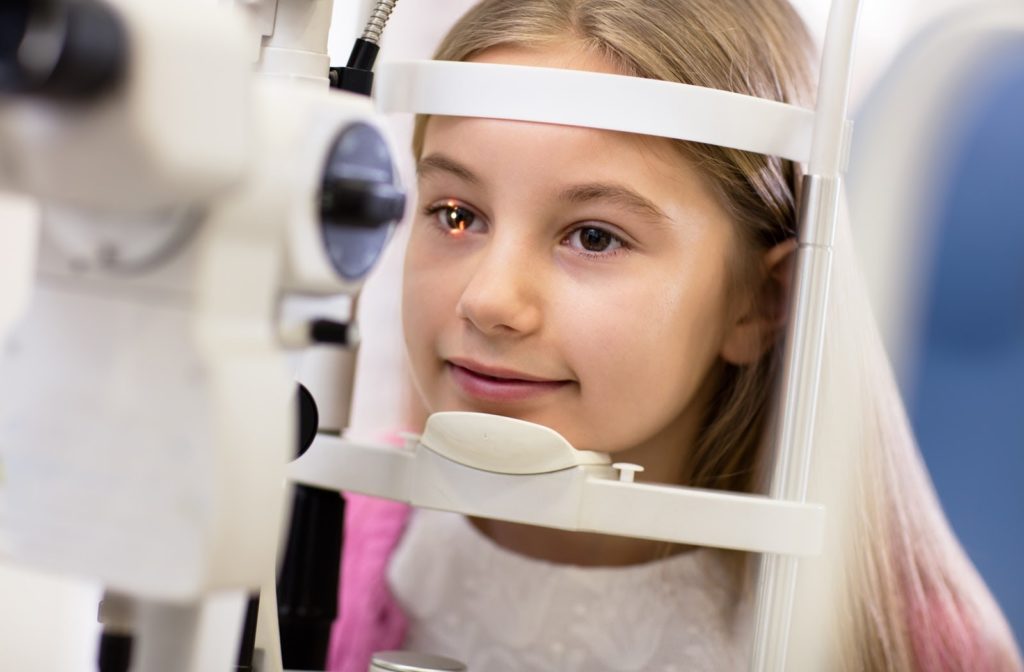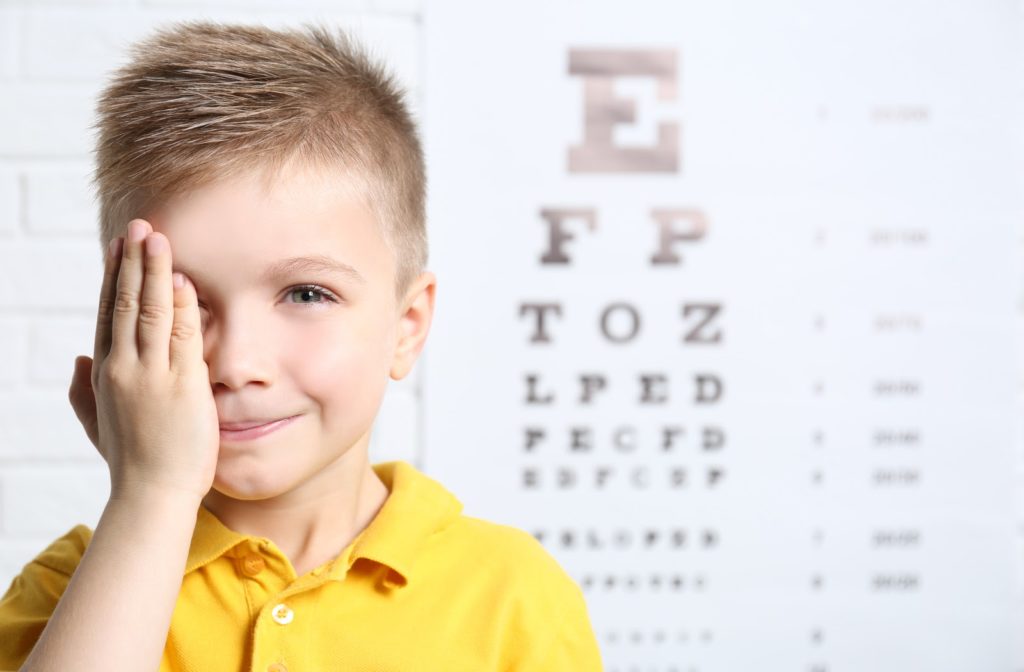Why are children’s eye exams important? How do you know how often your child should see their eye doctor? What vision symptoms should you look out for? These are all common questions for parents when it comes to their children’s eye health.
Unfortunately, vision problems aren’t always as obvious as other medical problems, and symptoms can be hard to spot unless your child is communicating them to you. The good news is, we’re here to help.
Keep reading to learn more about why children’s eye exams are important, how you can tell if your child needs to see an eye doctor and more!
Why Are Eye Exams Important for Children?
Your child’s eye health is extremely important. Children interact with their environment and learn visually. This means that if your child suffers from vision issues it can affect their physical, cognitive and social development as well as their overall well-being.
Vision problems in children are common, with approximately 6.8% of children in the US suffering from diagnosed eye conditions. When your child receives regular eye exams, their eye doctor will check for eye conditions and ensure that your child’s eyes are developing properly.
How Do You Know if Your Child Has Vision Issues?
Unfortunately, children rarely complain about vision problems because they have no reason to believe that their eyesight is different from others around them.
Luckily, there are some symptoms that you can keep an eye out for that may point to a vision issue. If you notice any of the following symptoms, schedule an eye exam for your child:
- Red, itchy or watery eyes
- Eye discharge
- Squinting or rubbing the eyes
- Covering or closing one eye to see
- Tilting the head to see
- Sensitivity to or avoidance of light
- Blinking more than usual
- Lack of concentration, especially at school
- Holding objects close to their face to see
- Clumsiness
- Complaining of a headache or eye pain
- Avoiding activities needing distance vision
- Trouble focusing or making eye contact
- Misaligned eyes
- Difficulty following objects or people with their eyes
- Avoiding activities such as reading, playing sports or watching TV

What Does a Doctor Look For in an Eye Exam?
When your child receives an eye exam, their eye doctor will check the overall health, vision and condition of their eyes. They will also check for common eye conditions such as:
Myopia
Myopia is also known as nearsightedness and is one of the most common eye conditions that affect children. Myopia affects how your child sees objects and means that they will be able to see objects that are nearby clearly, while further objects appear blurry.
Amblyopia
Amblyopia is more commonly referred to as “lazy eye” and occurs when one eye is stronger than the other. If amblyopia is left untreated, it can lead to vision loss. In fact, it is the leading cause of vision loss in children, affecting 3 out of 100 children.
Strabismus
Strabismus, or “cross-eye” is an eye misalignment issue where the eyes fail to point in the same direction. It is usually caused by weak eye muscles and can severely affect your child’s vision.
When Should You Bring Your Child in for an Eye Exam?
You may be wondering how often your child needs to receive an eye examination. The following guideline outlines the recommended frequency of eye examinations your child should get:
First Visit:
Your child’s first eye examination should be before they are 3 years of age. Of course, if your child is suffering from any of the symptoms previously mentioned, you should get them in to see their eye doctor at any age.
Regular Visits
Starting at age 5 or 6, your child should begin to see their eye doctor regularly. If your child has good vision and doesn’t suffer from any eye conditions, they should see their eye doctor every 2 years.
If your child needs to wear glasses or contact lenses or suffers from an eye condition, they should see their eye doctor annually or as recommended.
The 3 Steps to Ensure Your Child’s Best Vision Health
- Watch for signs and symptoms that your child has a vision problem
- If your child shows no symptoms, make sure they get their eyes examined regularly according to the guidelines based on their eyes
- Ensure you and your child follow the recommended treatment plan
At San Clemente Optometry, we know how important your child’s health is to you. If you have any questions or concerns about your child’s eye health, contact us today!




